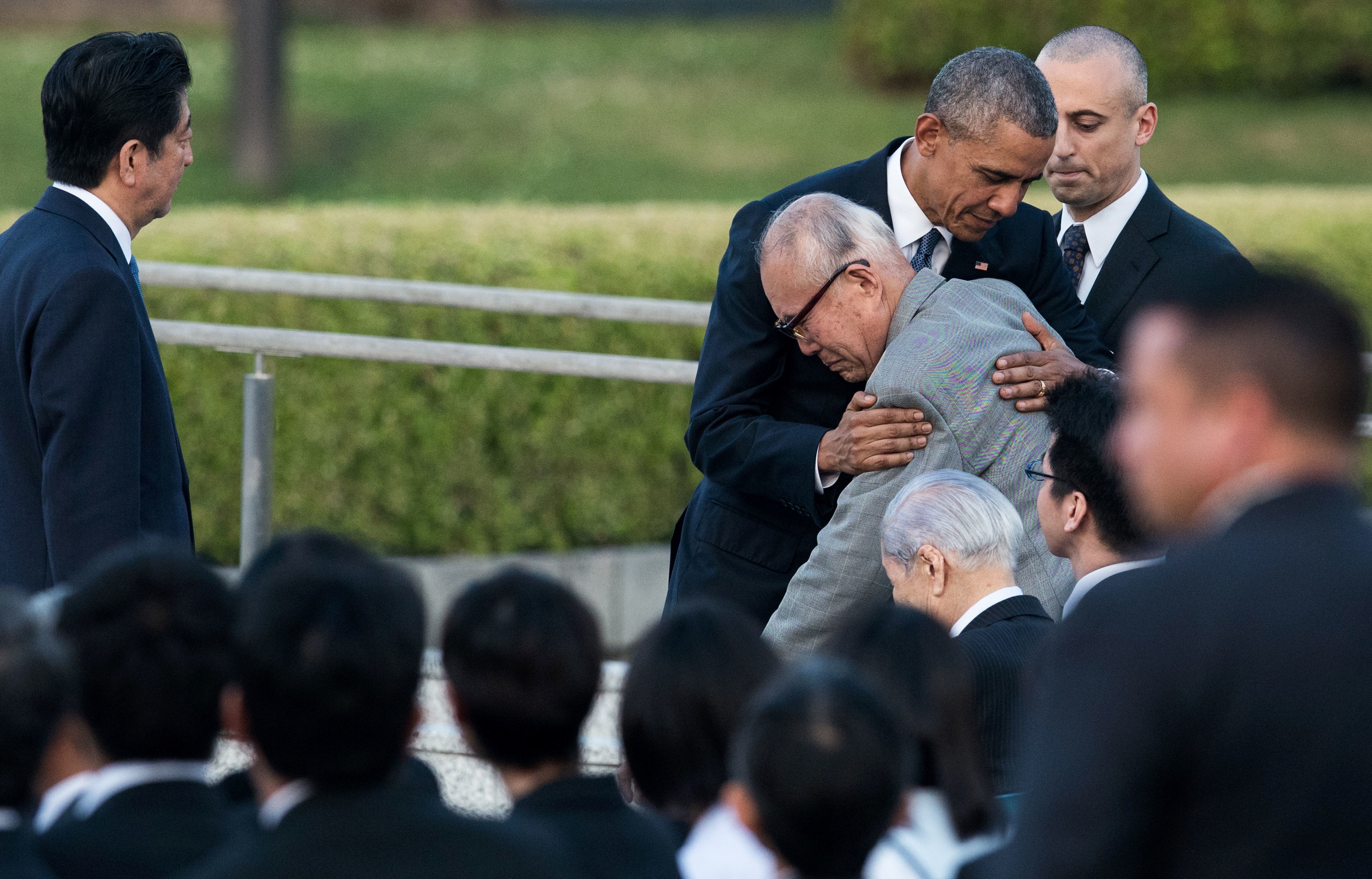
President Barack Obama visited a memorial for the 1945 U.S. bombing of Hiroshima, Japan, on Friday, where he laid a wreath before speaking alongside Japanese Prime Minister Shinzo Abe.
He became the first sitting U.S. president to visit the site of the bombing, which instantly killed between 60,000 and 80,000 people — and 140,000 in total — and hastened the end of the Second World War.
During his historic speech, he said "death fell from the sky" on the day the bomb was dropped in 1945.
"The memory of August 6, 1945, must never fade," Obama said. "That memory allows us to fight complacency."

Speaking of the relationship between the U.S. and Japan, he said: "Since that fateful day, we have made choices that give us hope. The United States and Japan have forged not only an alliance than a friendship that has won far more for our nations that conflict ever could."
He added that nations, like the U.S., that have stockpiles of nuclear weapons must possess "the courage to escape the logic of fear, and pursue a world without them. We may not realize this goal in my lifetime, but persistent effort can roll back the possibility of catastrophe."
He concluded that he hoped the bombings of Hiroshima and Nagasaki would eventually be remembered not as the "dawn of atomic warfare" but "the start of our moral awakening."
Speaking after Obama, Abe said the occasion marked a new chapter of reconciliation between the U.S. and Japan.
View this video on YouTube
Earlier in the day, Obama addressed troops at the Iwanuki Marine Corps Air Station en route to the Hiroshima Peace Memorial. He said he hoped the visit would present an "opportunity to honor the memory of all who were lost during World War II" and to recommit to "peace and security of a world where nuclear weapons would no longer be necessary."
He said it was "testament to how even the most painful divides can be bridged; how our two nations — former adversaries —cannot just become partners, but become the best of friends and the strongest of allies."

The visit was six years in the making inside the Obama White House, and was reportedly initially resisted by Japanese officials, according to CNN.
However, Secretary of State John Kerry was well-received when he visited the memorial last month, paving the way for the president's visit, which coincides with the G7 summit taking place in the country.
Like Kerry, Obama did not apologize for the bombing.
He was greeted in Hiroshima by Sunao Tsuboi of the Hiroshima Prefectural Confederation of A-bomb Sufferers Organization (HPCASO).
Tsuboi, born in 1925, was a 20-year-old student at the time of the bombing and was severely injured.
In remarks released to the press ahead of the visit by the White House Press Office, Tsuboi said:
“I never imagined [Obama] would come while I am alive. We do not need apologies. I hope that he will present in Hiroshima what is good for the happiness of humankind. I would like to join hands with each other through the power of reason and beyond hatred.”
The president met with a number of survivors of the bombing at the memorial, including peace activist Tsugio Ito, 81.
Ito survived the bombing, and went on to marry and have two sons. However, his eldest son, Kazushige, died in New York on September 11, 2001 in the terror attack on the World Trade Center.
Another Hiroshima survivor, 79-year old Shigeaki Mori, has spent decades working to ensure the 12 American prisoners of war who died in the bombing were given recognition, according to the New York Times.
At the end of their conversation, President Obama gave Mori a hug.


